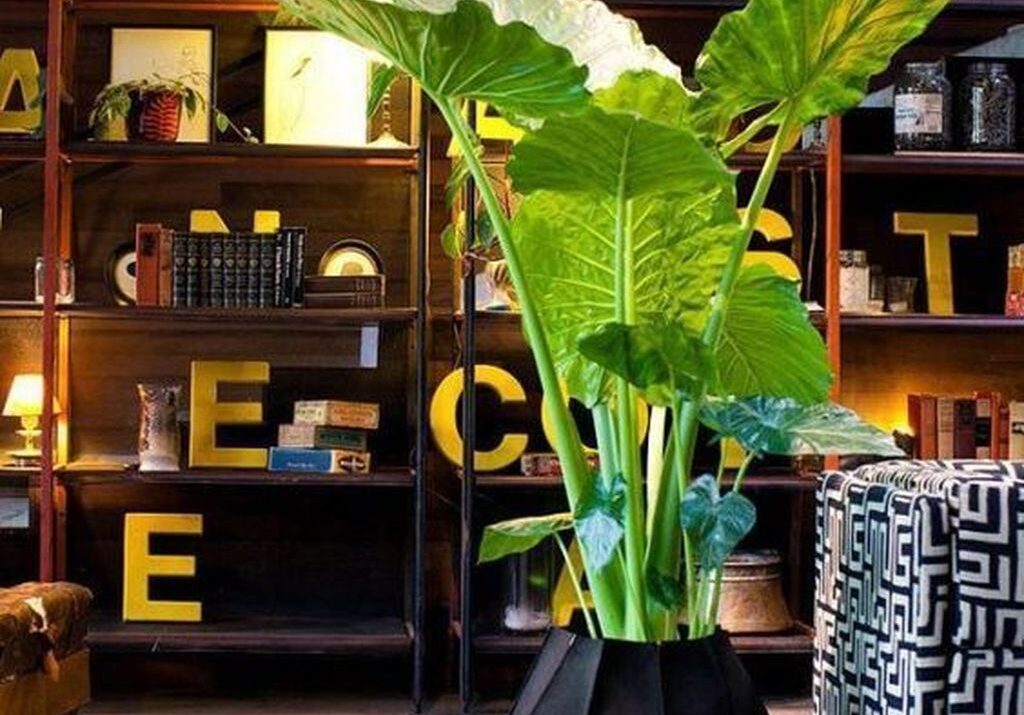Indoor Plants – Indoor air quality has a direct impact on our health, and incorporating indoor plants that purify the air can be an effective way to remove toxins and freshen up our homes. Many common household plants not only add beauty to your space but also help to filter out harmful substances such as formaldehyde, benzene, and trichloroethylene, which are often found in indoor environments.
Table of Contents
ToggleWhy Choose Air-Purifying Indoor Plants?
Indoor plants that purify the air are natural air filters that can remove pollutants from the environment, making them beneficial for people who spend a lot of time indoors. These plants contribute to better indoor air quality, help reduce symptoms of respiratory conditions, and create a more relaxed atmosphere. According to studies by NASA, certain houseplants have the ability to absorb toxins through their leaves, improving indoor air quality by naturally filtering out harmful compounds.
Top Indoor Plants That Purify the Air
If you’re looking to add some greenery with functional benefits, these top air-purifying indoor plants are an excellent choice.
Snake Plant
- Light Requirements: Low to bright, indirect light
- Watering Needs: Minimal; water only when soil is dry
- Purifying Qualities: Known for filtering out formaldehyde, xylene, and nitrogen oxides
Why Snake Plant? The Snake Plant (also known as Mother-in-Law’s Tongue) is a low-maintenance plant that effectively removes toxins and even produces oxygen at night, making it ideal for bedrooms.
Spider Plant
- Light Requirements: Bright, indirect light
- Watering Needs: Moderate; water when the top inch of soil feels dry
- Purifying Qualities: Removes formaldehyde, xylene, and carbon monoxide from the air
Why Spider Plant? The Spider Plant is incredibly easy to care for, making it a popular choice for beginners. Its long, arching leaves add a decorative touch, and it’s non-toxic to pets.
Peace Lily
- Light Requirements: Low to moderate, indirect light
- Watering Needs: Moderate; keep soil slightly moist
- Purifying Qualities: Known for removing ammonia, benzene, and formaldehyde
Why Peace Lily? The Peace Lily not only purifies the air but also blooms beautifully with white flowers, adding elegance to any indoor space. It’s particularly effective in absorbing mold spores, making it ideal for bathrooms.
Aloe Vera
- Light Requirements: Bright, indirect to direct light
- Watering Needs: Minimal; water sparingly and allow soil to dry between waterings
- Purifying Qualities: Removes formaldehyde and benzene
Why Aloe Vera? Aloe Vera is a multipurpose plant that purifies the air and offers soothing gel within its leaves, commonly used for skin conditions. It’s perfect for windowsills and sunny indoor spots.
Boston Fern
- Light Requirements: Indirect, bright light
- Watering Needs: High humidity; water regularly to keep soil consistently moist
- Purifying Qualities: Known to filter out formaldehyde and xylene
Why Boston Fern? Boston Ferns thrive in humid environments and are excellent for removing formaldehyde, which is often found in household products. They add lush greenery to your home and are particularly good for bathrooms or kitchens.
Placement Tips for Air-Purifying Plants
To maximize the benefits of air-purifying plants, consider these placement tips:
- Bedroom: Place a Snake Plant or Aloe Vera near your bed to help filter the air as you sleep.
- Living Room: Peace Lilies and Boston Ferns are great choices for living areas since they help remove toxins commonly found in furniture and carpets.
- Bathroom: The Peace Lily and Boston Fern thrive in humidity, making them ideal for bathrooms where they can help absorb moisture-related pollutants.
Caring for Your Indoor Air-Purifying Plants
Keeping indoor plants healthy ensures they continue to purify your air effectively. Here are a few essential care tips:
- Watering: Adjust watering based on each plant’s needs. Overwatering is a common mistake, so ensure pots have good drainage.
- Light: Ensure each plant receives the appropriate amount of light. Most air-purifying plants can tolerate indirect or low light but will thrive in brighter conditions.
- Humidity: Some plants, like Boston Ferns, prefer high humidity. Mist the leaves or use a humidity tray to keep moisture levels up.
- Dusting: Regularly clean the leaves of your plants to allow optimal absorption of toxins. Dust can block pores, reducing their effectiveness as air purifiers.
Additional Resources on Indoor Air Quality
Using air-purifying indoor plants is a natural way to improve air quality, but they work best alongside other practices, such as proper ventilation. For more detailed information on improving indoor air quality, visit the Environmental Protection Agency’s Indoor Air Quality Resources.
Adding these air-purifying plants to your home can make a big difference in both air quality and ambiance. With minimal care, they offer beauty and health benefits, creating a natural, fresh, and welcoming indoor environment.




